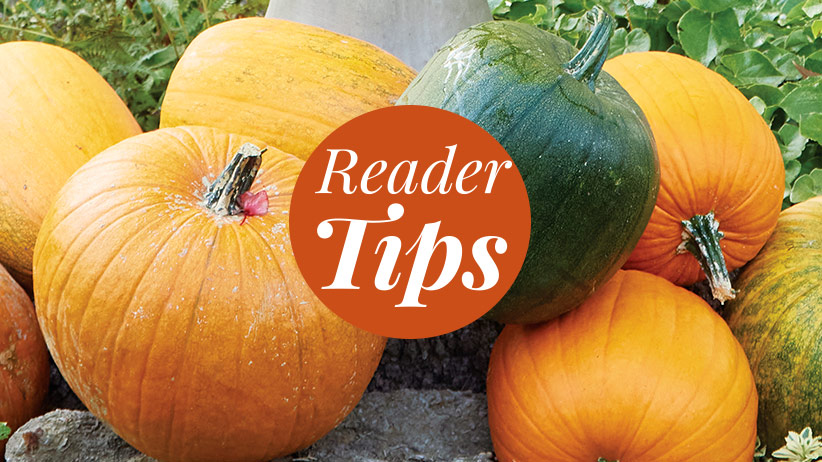Designing a drought-tolerant landscape
Starting a garden from scratch is a big challenge. But it was one that garden designer Rebecca Sweet looked forward to when she and her husband, Tom Urban, moved to Granite Bay, California, 7 years ago. The 1-acre property had plenty of room and potential, so she brought a rental truck full of plants from the old garden and started ticking off others that had been on her wish list. Rebecca was excited to experiment with new plants and design combinations in her zone 9 garden to find the ones that are tough, drought-tolerant and resilient. She shares the results with her clients as well as those following her blog, Harmony in the Garden. Watch the Talk & Tour video above to get a personal tour of the property, and read on to learn more about how she went about designing this impressive garden.

Sunny drought-tolerant slope
It can be hard to know where to begin when the whole yard needs work. So Rebecca started with the large berm next to the driveway because it was well defined and the area she sees most often. The 6-foot-tall southwest-facing berm above is one of the hottest spots in the yard —it’s in full sun with lots of reflected heat from the driveway. This region can go without rain for months, and temperatures regularly reach 110 degrees F in summer, so plants growing in this spot have to be tough.
Spring bulbs kick off the growing season, followed by the pink blooms of ‘Long John’ grevillea. The Stoke’s aster (Stokesia laevis) and tall sedum (Hylotelephium hybrid) are in full swing by summer, with ‘Wynyabbie Highlight’ westringia (Westringia hybrid) blooming off and on all year. ‘Meerlo’ lavender (Lavandula allardii) doesn’t flower, but its variegated foliage is a real head-turner and has a strong fragrance.
The sturdy shrubs provide plenty of structure for the design and screen the view from the neighbor's backyard. And now that the plants are established, their extensive root system helps stabilize the slope along with a line of carefully selected stones help prevent erosion. Rebecca found the stones in the yard and likes the colors, shapes and textures they add to the border.

Water wise front yard
The driveway turnaround has become one of Rebecca’s favorite spots to enjoy her morning coffee. It doesn’t rain much in this area during the summer — some years not at all. On the other hand, winter often produces downpours. Rebecca expanded a low spot in the border here to create a rain garden. It catches the water from the driveway so it doesn’t flood the neighbor’s yard or rush into the street.

Design a garden border with multiple seasons of interest
Layers of trees, shrubs and perennials around her morning coffee bench help dampen the sound from the street and provide privacy. It looks especially pretty in fall when the Japanese maples glow with color. Oak trees (Quercus spp.) provide dappled shade, but Rebecca and Tom have lost six of the originals since they moved in due to age, storm and disease. Though she’s always sad to lose a mature tree, there is the consolation of new planting opportunities. Japanese maples (Acer palmatum) are one of Rebecca’s go-to plants for filling empty spots in the garden and grow beautifully in full sun to part shade. If the loss of an oak tree leaves Rebecca with the need for some screening, she chooses evergreen plants, such as knife-leaf acacia (Acacia cultriformis) that has blue-gray foliage and fragrant yellow spring blooms. Horned spurge (Euphorbia ceratocarpa) is another favorite with slender blue-green foliage and long-lasting yellow-green blooms.

Degrees of dryness
The front yard slopes down to the street. A 3-foot-wide strip with a slightly higher water table along the front of the yard allows Rebecca to grow plants that, while drought tolerant, need more moisture to thrive than the ones at the top of the slope, near the house. It’s a great spot to grow the Little Lime panicle hydrangea (Hydrangea paniculata), Arkansas amsonia (Amsonia hubrichtii) and New Zealand sedge (Carex tenuiculmis) above. In fall when the hydrangea’s blooms fade to brown, the amsonia has bright yellow foliage.
You Might Also Like:
Drought-Tolerant Plant Combinations
DIY Rain Barrel Project
Watch Our Talk & Tour Video Playlist on YouTube!

Repetition creates unity in the garden
Trying out lots of different plants in a space is fun but can result in a garden that doesn’t look pulled together. Rebecca’s solution is to stick with a color palette of yellow and cream. Threading flowers and foliage with a similar hue through all the borders creates a cohesive look, even if the plants themselves are different. Repeating a favorite plant here and there helps too but isn’t strictly necessary. ‘Meerlo’ lavender’s creamy yellow edge in the photo above echoes the bright yellow of the Jerusalem sage (Phlomis fruticosa), ‘Peaches and Cream’ grevillea and quirky drumstick flower (Craspedia globosa) throughout the garden.
Rebecca's favorite yellow plants
Here are some of Rebecca’s go-to plants with yellow flowers and foliage and what she likes about each.
-
Blanket flower (Gaillardia x grandiflora)
Perennial; yellow and red daisy-shaped blooms in summer; 1 to 3 ft. tall, 1 to 2 ft. wide; cold hardy in USDA zones 3 to 10. “Its long-lasting blooms attract every butterfly in town.” -
Drumstick flower (Craspedia globosa)
Perennial; yellow globe-shaped blooms summer to frost; 24 to 30 in. tall, 12 to 24 in. wide; cold hardy in USDA zones 7 to 10. “Ball-shaped blooms appear to float above lower-growing plants.” -
Jerusalem sage (Phlomis fruticosa)
Perennial; bright yellow blooms at each leaf joint in late spring to summer; 2 to 6 ft. tall, 2 to 5 ft. wide; cold hardy in USDA zones 7 to 10. “Whorls of yellow flowers provide a unique flower shape, and the felty foliage is soft to the touch.” -
‘Peaches and Cream’ grevillea (Grevillea hybrid)
Shrub; spidery pale yellow to peachy pink blooms all year; 6 to 8 ft. tall, 8 to 12 ft. wide; cold hardy in USDA zones 9 to 11. “This variety blooms off and on through the year and is a hummingbird favorite.” -
‘Wynyabbie Highlight’ westringia (Westringia hybrid)
Shrub; small lavender blooms all year, variegated green and cream foliage; 3 to 4 ft. tall and wide; cold hardy in USDA zones 9 to 10. “The variegated green and cream evergreen foliage complements neighboring canary-yellow flowers.”

Backyard makeover
The backyard sits just off the driveway and several steps down. Thousands of cobblestone pavers, which Rebecca calls “ankle twisters” surrounded the pool when the couple moved in, and she determined that they needed to go. But because of all the steps, they couldn’t just pull a truck up and start tossing them in. Rebecca and Tom hauled them all out by hand, filling 5-gallon buckets and dragging them up to the drive. Sometimes they got up early to get a couple of hours of work done before heading to their day jobs. It took them several months to finish the project. Tom estimates they moved 5 to 6 tons of cobblestones, offering them free to anyone who was interested. They replaced the cobblestone pavers with mortared stone and steps that are smooth and easy to walk on.
Designing with boulders in the garden
Several unique boulders — some are up to 5 feet tall — stand in and around the patio. The challenge has been to find ways to soften the look of these behemoths and bring them into scale with the surrounding patio. Rebecca tried lots of plants around different stones but is happy with the results of this grouping above. The maple’s burgundy foliage turns a wonderful shade of orange in fall and as it grows, it will screen the view of the pool’s pump house behind. Even now the tree helps make these 4-foot-tall stones seem slightly less massive. Midsized Lime Tight mat rush (Lomandra confertifolia) and ‘Silver Mound’ artemisia (Artemisia schmidtiana) stair step down to the patio for a more graceful connection to the landscape.

Super succulents
A craggy old oak tree near the house creates a wonderful view from the kitchen window. But it was surrounded by lawn, and the irrigation that keeps turf happy often kills oak trees. So Rebecca replaced the turf with dry-loving succulents. And with all the stone in the backyard, there’s not a lot of room for borders, but there’s plenty of space for containers. Larger pots filled with drought-tolerant bulbs, perennials and small shrubs are hooked up to a drip irrigation system. Rebecca keeps smaller pots filled with succulents and cacti near the house so they’re easy to water by hand. Even these tough customers need afternoon shade to avoid burned foliage. Find more of Rebecca’s growing secrets below. She’s learned by trial and error which ones work best — just like the rest of her garden.
5 Tips for growing succulents successfully
Succulents and cacti are easy-care container plants, especially when it’s hot and dry. Here’s what Rebecca does to keep hers looking great:
- Water Wisely Don’t water too much or they’ll rot. Aim for every 10 days or so, even during the height of summer.
- Feed Occasionally Feed every 6 weeks with an all-purpose water-soluble plant food at half strength.
- Get Soil Savvy Use a fast-draining potting mix labeled “cactus” to prevent root rot, and repot every few years to freshen up the mix.
- Pinch Stems If succulents get leggy, pinch them back by ¼ to ⅔, depending on the plant. You can let the cut portion harden off for a few days and plant that too.
- Carefully Clean To keep cacti tidy, use long tweezers to pluck out leaves or debris. Avoid prickles by wearing thick leather gloves and wrapping a narrow piece of cardboard around the plant for repotting.
You Might Also Like:
Tips for Watering Succulents
How to Propogate Succulents
Shop Our Container Garden Collection
Summer Container Planting Plans















